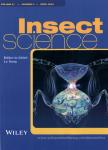Reevaluating the conceptual framework for applied research on host-plant resistance
Reevaluating the conceptual framework for applied research on host-plant resistance作者机构:Department of Entomology Louisiana State University Agricultural Center 404 Life Sciences Building Baton Rouge LA 70803 USA
出 版 物:《Insect Science》 (昆虫科学(英文版))
年 卷 期:2013年第20卷第3期
页 面:263-272页
核心收录:
学科分类:0710[理学-生物学] 0830[工学-环境科学与工程(可授工学、理学、农学学位)] 07[理学] 09[农学] 0904[农学-植物保护] 071007[理学-遗传学] 0901[农学-作物学] 090402[农学-农业昆虫与害虫防治] 0713[理学-生态学]
基 金:Approved for publication by the Director of the Louisiana Agricultural Experiment Station
主 题:antibiosis antixenosis host-plant resistance integrated pest management,plant-insect interactions tolerance
摘 要:Applied research on host-plant resistance to arthropod pests has been guided over the past 60 years by a framework originally developed by Reginald Painter in his 1951 book, Insect Resistance in Crop Plants. Painter divided the "phenomena" of resistance into three "mechanisms," nonpreference (later renamed antixenosis), antibiosis, and tolerance. The weaknesses of this framework are discussed. In particular, this trichotomous framework does not encompass all known mechanisms of resistance, and the antixenosis and antibiosis categories are ambiguous and inseparable in practice. These features have perhaps led to a simplistic approach to understanding arthropod resistance in crop plants. A dichotomous scheme is proposed as a replacement, with a major division between resistance (plant traits that limit injury to the plant) and tolerance (plant traits that reduce amount of yield loss per unit injury), and the resistance category subdivided into constitutive/inducible and direct/indirect subcategories. The most important benefits of adopting this dichotomous scheme are to more closely align the basic and applied literatures on plant resistance and to encourage a more mechanistic approach to studying plant resistance in crop plants. A more mechanistic approach will be needed to develop novel approaches for integrating plant resistance into pest management programs.



